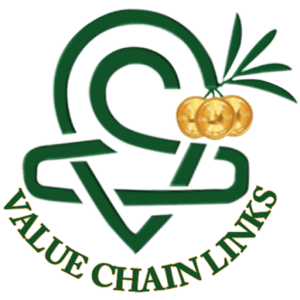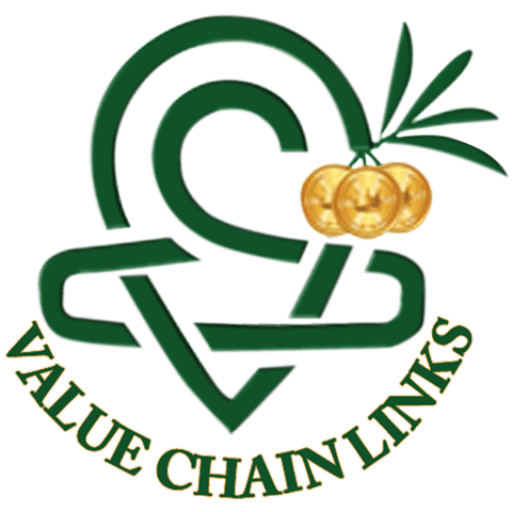IS THERE A MISSING LINK TO SMALLHOLDERS’ PROSPERITY?

BY DR. NIMROD
There is no “Silver Bullet” to solve the problems of hunger and poverty in emerging economies. However, there is a “Sure Path” for a better future.
The path to a better future is based on accepting reality as it is. Meaning, smallholders’ current state is no longer accepted, and the tools we have used so far have not produced the desired results and probably never will.
Hence, there is no reason to continue to cling to dreams in which what has not worked so far will suddenly start working. It is time to move on, CHANGE to something else, which WILL work and bring the desired results!
In last week’s article, I presented an economic approach, which in principle says that the continuation and encouragement of smallholders in emerging economies to grow staple crops is counter constructive and will prevent them from PROSPERITY.
Indeed, if our sole goal is short-term targets; to prevent starvation or “play with numbers” by temporarily increase farmers’ income above 1.9$ per day (i.e., above the poverty line), then growing staple crops is an acceptable way.
But this article is about strategic, long-term change processes that will bring sustainable prosperity and not short-term, tactical political maneuvers.
PROSPERITY
Following my previous article, I received many responses. I was surprised to find that all sides by the concept it presented, while few raised concern regarding the idea’s practicality.
Let me remind you that the message of that article was clear and straightforward; a prosperous future is possible when we shift our focus from the CROP the farmer is growing to the VALUE PER HECTARE he creates.
This concept is rooted in the business world, which views the farmer as a businessperson whose “production factory” is his land.
Hence, a farmer’s livelihood is determined by the value he creates per square meter, i.e., his production factory. Poor farmers create little value per square meter, while prosperous farmers create high value per square meter. This is the fundamental difference between farmers in developing countries versus those in developed ones.
Hence, smallholders should strive to exhaust the maximum economic potential per “operation unit,” i.e., a hectare of land, which is the equivalent to a “machine” in a factory.
Do you agree with the concept that the farm/land is the equivalent of a factory, hence the crop is the “machine”, responsible for the value created in the factory?
WHY NOT CHANGE?
The way to move fast forward is by continuously asking, and listening to opinions and ideas other than yours, or even better, is listening to thoughts that contradict your approach entirely. It is advantageous to question your concept continuously, even when regarded as “successful”.
Therefore, unfortunately, and fortunately, at the same time, no single comment I got contradicted the concept presented in the previous article.
However, the comments below explain well why the default of farmers and decision-makers is not to change. I believe it is imperative to understand what is stopping the change before we can initiate a change.
Comment 1
Dear Dr. Nimrod,
I must admit you have traveled and traversed some of the areas in remote parts of Africa.
I have been in the industry for more than 20 years, and I have a simple response.
Why focus on staples.
1. Immediate food security for the household.
2. Better and predictable production, especially corn (Horticultural crops have expensive seeds, are labor-intensive, and are challenged by several pests and diseases in Africa, unless proper training).
3. Postharvest challenges – despite the maize weevil and larger grain borer being persistent, corn/ maize stores longer and have different combinations as food. Transportation is much easier and thus the attachment.
4. Marketability – Grains have predominantly been traded more easily since their visual appeal and grading are easier.
5. Horticultural crops and fruits are consumed in lower quantities, and their value chain is less developed, especially in terms of the cold chain needed to keep them fresh.
6. Perishability – in terms of shelf life, unless processed into other products, fruits and vegetables have a shorter life and need to reach the market quickly.
7. Market distortions – Trade barriers such as tariffs, quotas, non-tariff barriers such as GAP (good agricultural practices specifying crop protection procedures are limiting factors).
8. State / Government support – Most countries don’t even get close to the Malabo declaration. Government support is virtually absent, and farmers are on their own.
9. Infrastructure- absent or inadequate.
10. Literacy levels.
Among the main ones.
Best regards
JAMES N.
Comment 2
Good Morning Dr.
This was a good Article, but where I find the Problem for Smallholder Famers is in The Cost of Growing High-Value Crops and The Patience from the Period of planting to the Period they will get paid from Buyers, which sometimes may be delayed. Yet staple Food they grow they do it on their own without external investment. They usually have seeds from their previous Harvest, so in the end, the Process is Easier for Them than for High-Value Crops. Thank you.
Sincerely,
William
Remarks to the comments
If you read those comments carefully, you must have noticed that nowhere do they say that increasing the value per hectare or changing the type of crop is not valid, not possible, or a not good idea on the road to prosperity.
The underlying message I get from those comments is swaying between raising hands and surrendering to the current sad state, to a strong desire for change.
It is as if they say, “Mr. Nimrod, look, you have a nice idea, but the reality wouldn’t let it happen. It is easier for everyone, including the farmers and decision-makers, to maintain the catastrophic state as it is, even when they have ample proof showing this is leading to a dead-end with similar future results”.
In his comment, William is addressing two challenges;
(1) The risks that farmers face if changing to high-value crops, and
(2) The reasons for keep doing what they do, although the inevitable long-term harmful fate and its consequences (already appearance).
Conclusions (from all comments sent)
* None of the commentators suggested that the continuation of the current state is the solution to poverty or hunger.
* None suggested keeping things as they are or “keep/proceed more of the same”.
* None suggested that growing more staple crops will bring prosperity.
* None suggested that the required “change” will be easy or fast.
* None suggested a recipe for the needed change.
* None suggested that technology/finance is the solution to poverty and hunger.
* None suggested that more donations or subsidies would solve poverty.
At the same time, everybody –
* Agreed that smallholders’ livelihood must improve.
* Know that farmers alone can’t pull themselves out of poverty or hunger.
* Understand that the current extent of poverty is a social and economic time bomb.
* Feel there is a gap between the current unacceptable state and future desired state. Feel that if we could only bridge that gap, then things would change for good.
WHAT IS MISSING?
Assuming we agree that smallholders are one type of businessperson. And considering we also agree that smallholders repeatedly fail not because of bad luck, stupidity, or collectively deciding to fail all at the same time and all over the world.
If we agree on the above assumptions, we can conclude that something in the business model under which smallholders operate is missing or malfunctioning and should be changed!
If you feel that “something is missing”, then know that you are not alone. The team of The Africa Organization of Technology in Agriculture Conference (AOTA) feels the same.
For the first time, this is why a “typical” technological-oriented conference, the AOTA, is now focused on business models that enable the increase of smallholders’ livelihood with the help of technology.
The AOTA conference is making a point; technology not supported by a proper business model will not bring prosperity to smallholders. This conference is your chance to show and learn how novel business models can contribute to smallholders’ and your success.
The AOTA conference is a unique opportunity to present field results of how your technology + tailor-made business model dramatically increased smallholders’ income and profit and subsequently improved smallholders’ livelihood.
NOVEL MODELS
Smallholders need change, countries need change, and if you think that CHANGE is the result of financial resources or technology, you are waiting for something that will never come.
Do the following exercise, think about the most significant changes that accrued in your country in the past… 200 years! Ask yourself, was it a result of technology or financial resource, or maybe a result of something else?
For example, the most significant “change” that most countries experienced is receiving their independence, whether from external or internal forces.
South Africa (Mandela) got rid of Apartheid, America (Abraham Lincoln) got rid of slavery, and India (Gandhi) got rid of colonialism. They were not alone; many countries experienced similar historical transformative changes.
Was it thanks to novel technologies or financial support in any of these cases?
Of course not. So what was it that they did that dramatically changed the history of their countries and all of us?
They presented a new MODEL.
In the “old model,” the British or the White Man were superiors, ruled, and managed the economy and daily life in a British style.
The new models presented by Lincoln, Mandela, and Gandhi, brought hope and the concept that all people are equal, regardless of origin, color, religion, etc.
The most significant things in the history of nations were never related to technology but the introduction of “Novel Models”.
Think of Amazon, Apple, Facebook, etc., the most successful companies in the world started by poor individuals with great business models. The success came by supporting a successful business model with the right technologies, never the other way.
Prosperous countries are “run” and managed as a successful business, and just like a business, they need an excellent model to “make it big”.
Nowadays, there are no British, French, Spanish, or Portuguese armies in Africa, Asia, South America, etc. Leaders of emerging economies can choose to continue blaming others or step up and introduce a novel model that would bring the long-awaited and desired change millions of smallholders are waiting for.
| TAKEAWAYS» ACROSS THE BOARD everybody agrees that the present livelihood of farmers is unacceptable.» THERE IS a need for a change.» THE CHANGE will be the result of a new business model (A New Deal).» TECHNOLOGY AND FINANCIAL support can help in facilitating such change, but they are not the key.» A BRAVE LEADERSHIP and the introduction of proper business models can bring a long-term solution to poverty and hunger.» THE AOTA conference is a milestone in approaching African smallholders. |
| Please, if you found value in this article, it would mean a lot to me if you sent me a comment and shared it with your friends. |

